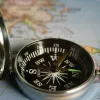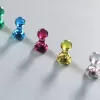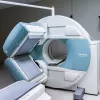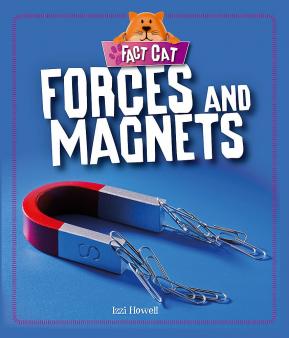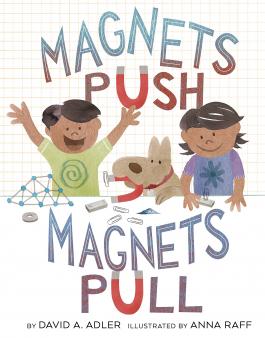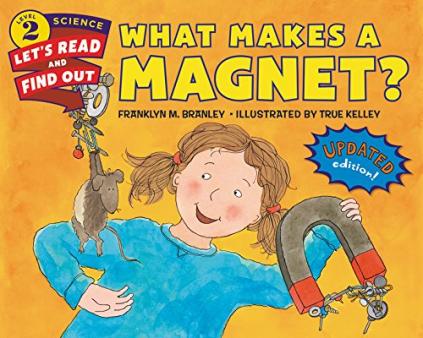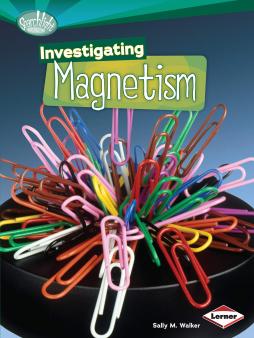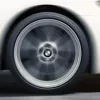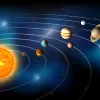Important update from TheSchoolRun
For the past 13 years, TheSchoolRun has been run by a small team of mums working from home, dedicated to providing quality educational resources to primary school parents. Unfortunately, rising supplier costs and falling revenue have made it impossible for us to continue operating, and we’ve had to make the difficult decision to close. The good news: We’ve arranged for another educational provider to take over many of our resources. These will be hosted on a new portal, where the content will be updated and expanded to support your child’s learning.
What this means for subscribers:
- Your subscription is still active, and for now, you can keep using the website as normal — just log in with your usual details to access all our articles and resources*.
- In a few months, all resources will move to the new portal. You’ll continue to have access there until your subscription ends. We’ll send you full details nearer the time.
- As a thank you for your support, we’ll also be sending you 16 primary school eBooks (worth £108.84) to download and keep.
A few changes to be aware of:
- The Learning Journey weekly email has ended, but your child’s plan will still be updated on your dashboard each Monday. Just log in to see the recommended worksheets.
- The 11+ weekly emails have now ended. We sent you all the remaining emails in the series at the end of March — please check your inbox (and spam folder) if you haven’t seen them. You can also follow the full programme here: 11+ Learning Journey.
If you have any questions, please contact us at [email protected]. Thank you for being part of our journey it’s been a privilege to support your family’s learning.
*If you need to reset your password, it will still work as usual. Please check your spam folder if the reset email doesn’t appear in your inbox.
Magnets
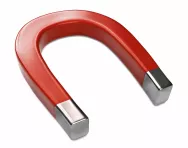
What are magnets?
A magnet is an object that is made of materials that create a magnetic field. Magnets have at least one north pole and one south pole. A magnetic field is the region in space where a magnetic force can be detected.
Magnetism is the force of attraction or repulsion between substances made of certain materials, such as iron, nickel, cobalt, and steel. The force of magnetism, simply put, is due to the motion of electric charges.
Magnets are present in most electronic devices. In fact, anything that has a motor uses a magnet. Televisions, computers and microwave ovens all operate with magnets. Magnets are used to keep refrigerator doors closed and are even mounted on trucks that clean roads. You’ll also find magnets in medical devices to create a magnetic picture, in trains, and in the systems used to slow down roller coasters. More uses for magnets are found every day.
Magnets attract, or pull, objects made with iron. Paper clips, scissors, screws, nuts, and bolts are just a few common everyday objects that are magnetic. A magnet will not attract paper, rubber, wood, or plastic. It is not true that a magnet will attract any kind of metal. For example, aluminium cans are metal, but do not contain iron, therefore they are not magnetic. Steel is a metal that is made with iron, so steel objects like tools and silverware are usually magnetic.
Top 10 facts
- Most of the magnets you see around you are man-made. Since they weren't originally magnetic, they lose their magnetic characteristics over time. Dropping them, for example, weakens their magnetism, as does heating them, or hammering on them, etc.
- Air-core magnets are created by current flowing through a wire. That current produces the magnetic field.
- Electromagnets are different because they have a ferromagnetic material (usually iron or steel) located inside of the coils of wire. The core isn't air, it is something that aids in producing magnetic effects, so electromagnets are typically stronger than a comparable air-core magnet.
- The Earth is a giant magnet. Its magnetic field is like a bar magnet at its centre.
- Magnets are usually made from iron or steel, but aluminium, steel-iron, copper, nickel and cobalt can also be made into powerful magnets.
- Many scientists believe that birds are able to find their way home by using the Earth's magnetic field to guide them on long distance flights.
- Some vets use magnets to pick up pieces of wire or other metal from inside the stomachs of large farm animals.
- Today, new trains use magnets to lift them off the ground so that they float. Floating reduces friction and allows the train to run more efficiently.
- If you attach a bar magnet to a piece of wood and float it in a bowl of water, it will slowly turn and the magnet’s north pole will point towards the Earth’s North Pole.
- A compass has a tiny bar magnet in it and works the same way as a bar magnet in water, helping explorers find their way.
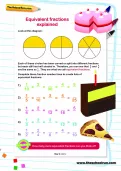

Boost Your Child's Learning Today!
- Start your child on a tailored learning plan
- Maths & English resources added each week to your plan
- Keep your child's learning on track & boost their confidence
Did you know?
- Magnets have two poles, a north pole and a south pole. The north pole of one magnet will repel and push away the north pole of another magnet. The south pole will repel another south pole. North and south poles are attracted to each other. A magnetic field flows from North to South and these fields are not visible, but if you place a piece of paper on top of a magnet and sprinkle fine iron powder on top, the shape of the invisible magnetic fields become visible as the fine iron powder clings to them. There are many shapes of magnet and each has a different magnetic field shape.
- Magnets can pull through gases, like air, but they can also pull through solids and even liquids, depending on the strength of the magnet. A magnetic field is the area around the magnet where it can attract or repel things. A magnet will affect a magnetic object only when it enters its magnetic field. This is why a small magnet on one side of the room will not attract things on another side. The strength of a magnet is stronger as you get closer to it, and likewise its strength is weaker as you are farther away.
- Most metals are not attracted to magnets. These include copper, silver, gold, magnesium, platinum, aluminium and more. They may however magnetise a small amount while placed in a magnetic field.
- Magnetic materials are made of thousands of tiny magnets called magnetic domains. Before the material is magnetised, all the little magnets point in different directions, so their effects cancel each other out. But a magnetic field can line them up so that they all point in the same direction. This turns the material into a magnet.
- Scientists measure magnetic fields with an instrument called a magnetometer. The instrument can also be used to measure the magnetism in ancient rocks. As the rocks formed, they were magnetised by the Earth’s field. Rocks of different ages may be magnetised in opposite directions, because the Earth’s magnetic field has often reversed. By piecing together records from different places, scientists can work out how rocks have moved in the billions of years since the Earth was formed.
Look through the gallery and see if you can spot the following:
- Horseshoe magnet
- A compass uses a magnet to find north
- Magnets on a board
- An MRI machine
- Magnetic and non-magnetic materials
Gallery
About
Magnets have been used by humans since ancient Greece. It is believed that naturally occurring minerals called magnetite were first discovered by the Ancient Greeks in the area of Turkey. Magnets used to be known as “lodestones”. The Vikings were known as the first people to use this magnetic material to create compasses that allowed them to navigate across water through poor weather conditions to discover and conquer new land. It is thought that the Vikings kept the magnetic compass a secret for many years. Magnetic compasses can now be found in every ship across the world to navigate the open seas.
Today almost all magnets are manufactured using various natural materials from around the world.
Magnetism is what gives magnets their ability to attract objects made of iron or steel. A magnet creates around itself a region of space with special properties. This region is known as a magnetic field. When two magnets come near each other, their fields create forces that attract or repel.
The Earth is itself a huge magnet, and the force its field exerts on other magnets makes them point in a north–south direction. This effect is used in the magnetic compass.
The most common magnetic material is steel, an alloy (mix) of iron, other metals, and carbon. Pure iron becomes magnetised in a magnetic field but does not stay magnetic. Steel can make a permanent magnet. Once it is magnetised, it stays magnetised.
The two ends of a magnet are always different from each other. The end that points north, if allowed to move freely, is called the north pole. The other end is the south pole. These magnetic poles behave rather like electric charges. Poles of opposite kinds attract each other, while poles of the same kind repel.
Every magnet is surrounded by an invisible, three-dimensional magnetic field. A field is a region in which something varies from point to point. In Earth’s atmosphere, for example, wind speed and direction vary from place to place. In a magnetic field, the strength and direction of the magnetic effect varies in a similar way. The field is at its strongest near the magnet. The idea of a magnetic field is based on the work of British scientist Michael Faraday (1791–1867) in the early 19th century. He sprinkled particles of iron around magnets to reveal what he called “lines of force” stretching from one pole to another. These helped him to explain many magnetic effects. We now see lines of force as indicating the direction of the field, with their spacing indicating its strength.
Electromagnets are made from wire carrying a current. If the wire is coiled, the fields from each turn of wire produce a stronger field. If the wire is wrapped around an iron core, the field gets stronger still. An electromagnet can be a single coil (called a solenoid) or bent double, with two coils. Electromagnets make it easy to handle scrap metal. When the current is switched on, it creates strong magnetism that picks up a load of steel. The crane swings round, the current is switched off, the magnetism disappears, and the steel drops where it is wanted. Electromagnets have many other uses including the generation of electricity in hydroelectric dams.
Words to know:
atmosphere - the mixture of gases that surrounds an astronomical object such as the Earth
attraction - the power of attracting
compass - a device for finding directions, usually with a magnetised pointer that automatically swings to magnetic north
electromagnet - a magnet consisting of a core, often made of soft iron, that is temporarily magnetised by an electric current flowing through a coil that surrounds it
force - the power, strength, or energy that somebody or something possesses
friction - the resistance of rubbing of two objects against each other when one or both are moving
hydroelectric - generated by converting the pressure of falling or running water to electricity by means of a turbine coupled to a generator
magnet - a piece of metal that has the power to draw iron or steel objects towards it and to hold or move them
magnetic field - a region of space surrounding a magnetised body or current-carrying circuit in which the resulting magnetic force can be detected
magnetism - the phenomenon of physical attraction for iron, shown in magnets or by a moving electric charge or current
material - the substance used to make things
permanent - never changing or not expected to change
repulsion - a force between two bodies of the same electric charge or magnetic polarity that tends to repel or separate them
Related Videos
Just for fun...
- Make your own magnetic compass with our step-by-step science project
- Some magnet activities to try
- Find magnets in a house then try a magnet quiz to see how much you’ve learnt
- Download a free Quantum Materials Colouring Book and find out lots more about magnetism
- Make your own magnet
- Test if things around the house are magnetic or not
Best books about magnets and magnetism for children
Find out more
- How magnets work
- Video clips about magnets and springs
- Watch a video for kids about magnets and static electricity
- Magnets and magnetism
- The DK findout! kids' guide to magnets
See for yourself
- The National High Magnetic Field Laboratory, the most high-powered magnet lab in the world, has magnet demos to watch on its website

